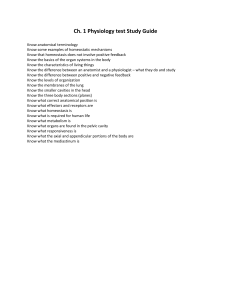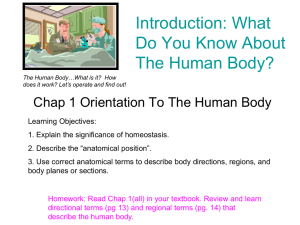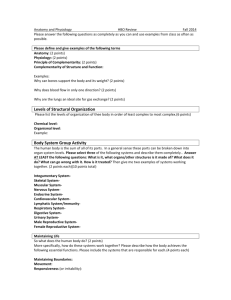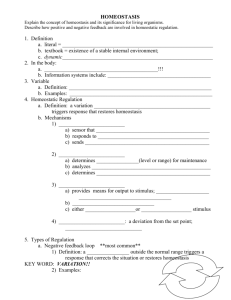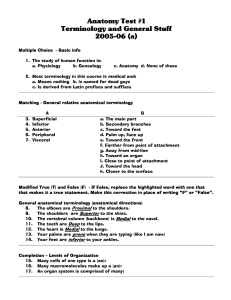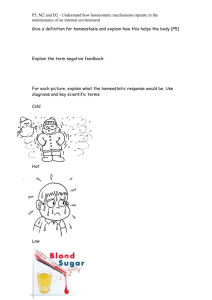- mrsolson.com
advertisement
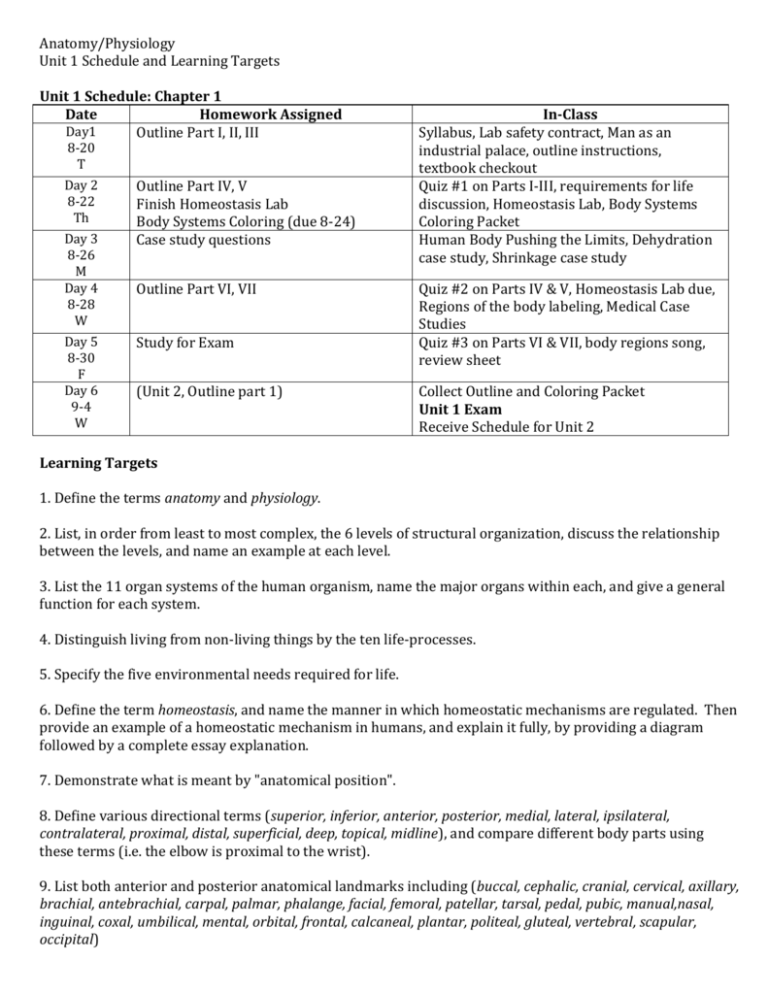
Anatomy/Physiology Unit 1 Schedule and Learning Targets Unit 1 Schedule: Chapter 1 Date Homework Assigned Day1 Outline Part I, II, III 8-20 T Day 2 8-22 Th Day 3 8-26 M Day 4 8-28 W Day 5 8-30 F Day 6 9-4 W Outline Part IV, V Finish Homeostasis Lab Body Systems Coloring (due 8-24) Case study questions Outline Part VI, VII Study for Exam (Unit 2, Outline part 1) In-Class Syllabus, Lab safety contract, Man as an industrial palace, outline instructions, textbook checkout Quiz #1 on Parts I-III, requirements for life discussion, Homeostasis Lab, Body Systems Coloring Packet Human Body Pushing the Limits, Dehydration case study, Shrinkage case study Quiz #2 on Parts IV & V, Homeostasis Lab due, Regions of the body labeling, Medical Case Studies Quiz #3 on Parts VI & VII, body regions song, review sheet Collect Outline and Coloring Packet Unit 1 Exam Receive Schedule for Unit 2 Learning Targets 1. Define the terms anatomy and physiology. 2. List, in order from least to most complex, the 6 levels of structural organization, discuss the relationship between the levels, and name an example at each level. 3. List the 11 organ systems of the human organism, name the major organs within each, and give a general function for each system. 4. Distinguish living from non-living things by the ten life-processes. 5. Specify the five environmental needs required for life. 6. Define the term homeostasis, and name the manner in which homeostatic mechanisms are regulated. Then provide an example of a homeostatic mechanism in humans, and explain it fully, by providing a diagram followed by a complete essay explanation. 7. Demonstrate what is meant by "anatomical position". 8. Define various directional terms (superior, inferior, anterior, posterior, medial, lateral, ipsilateral, contralateral, proximal, distal, superficial, deep, topical, midline), and compare different body parts using these terms (i.e. the elbow is proximal to the wrist). 9. List both anterior and posterior anatomical landmarks including (buccal, cephalic, cranial, cervical, axillary, brachial, antebrachial, carpal, palmar, phalange, facial, femoral, patellar, tarsal, pedal, pubic, manual,nasal, inguinal, coxal, umbilical, mental, orbital, frontal, calcaneal, plantar, politeal, gluteal, vertebral, scapular, occipital) 10. Name the three major body sections (planes, cuts), and describe how each would be accomplished (frontal, sagittal, parasagittal, transverse, midsagittal, oblique). 11. Designate major human body cavities and name the organs within each on a human diagram (dorsal, ventral, abdominal, mediastinum, peritoneum, cranial, thoracic, pericardial, pelvic). 12. Describe the anatomical importance of the diaphragm muscle. 13. Describe the nine regions of the abdominal area and the four quadrants of the abdominal area and list the major organs found within each. 14. Know the various medical imaging techniques.
